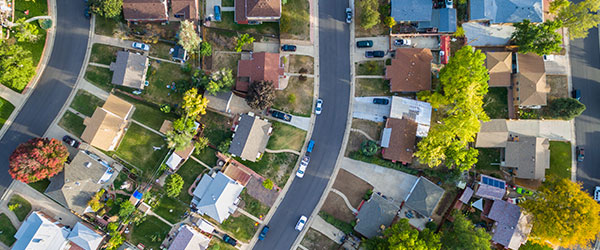 |
| |
| ‘Master planning’ for suburbia’s future
|
| |
In the 1950s and 1960s, the modern model for suburbia arose from a confluence of employment and transportation factors that continued to dominate for the latter half of the 20th Century.
Exacerbated by the rise of the highway system - subsidized by the government - suburban design typically increased distances between residential neighborhoods and places of business.
This led to sprawling single-family neighborhoods on larger-sized lots, where families could spend their time and store their cars and other toys.
Unfortunately, these ideals became main contributors to the housing supply crisis of the new millennium, with side effects including long commutes, traffic, strip malls and other unattractive retail centers.
Architects and engineers say better planning can build healthier communities while easing cost burdens. Called suburban “retrofits,” future developments focus on more affordable housing and mixed-use districts to improve walkability and reinvigorate neighborhoods.
Retrofitted suburbs offer what erstwhile urbanites expect, from a bustling restaurant, bar and arts scene to boutiques, salons, and personal trainers.
Borne out in senior living, corporate towns, and other planned communities, the “15-minute city concept” emphasizes a local economy in which all necessary amenities are within a short walk, bike ride or public transit trip. The overall goal is to bring people together by design.
Across America, cities are retrofitting outdated malls, office parks, parking lots, and even the streets of America’s suburbs, developing more diverse, connected, complete communities.
According to the latest U.S. Census data, populations of lower-density counties in large urban metros grew by 0.8% in 2020, while populations of urban counties in large metros declined by about 0.5%.
Land use policy is evolving to allow more multi-family housing, townhomes, and businesses in smaller footprints. In the master-planned community, people need more affinity for their neighbors.
Long-term choices employers make about remote work will have a major impact on decisions about where people choose to live.
|
| |
| Bay Equity Home Loans Newsletter |
 |
Rising prices do not mean bubble trouble

|
|
|
| Bay Equity Home Loans Newsletter |
 |
Young homebuyers expand market dominance

|
|
|
| Bay Equity Home Loans Newsletter |
 |
‘American Pie’ celebrates 50 epic years

|
|
|
|
|
| |
Not intended to solicit loans in states I am not licensed in. Bay Equity LLC. Equal Housing Opportunity. This is not a commitment to lend or extend credit. Restrictions may apply. Rates may not be available at time of application. Information and/or data are subject to change without notice. All loans are subject to credit approval. Not all loans or products are available in all states. Bay Equity LLC, 770 Tamalpais Drive, Suite 207, Corte Madera, CA 94925; NMLS ID#76988 | NMLS consumer access: www.nmlsconsumeraccess.org/EntityDetails.aspx/COMPANY/76988 | Texas SML Mortgage Banker Registration #76988. Texas Recovery Fund notice, Click Here: https://texreg.sos.state.tx.us/fids/201203137-2.pdf | State Licenses: http://bayeq.us/114235.
120 E George Hopper Rd Suite 112 Burlington, WA 98233
Copyright Bay Equity Home Loans. All rights reserved.
|
 |
|
| |
|